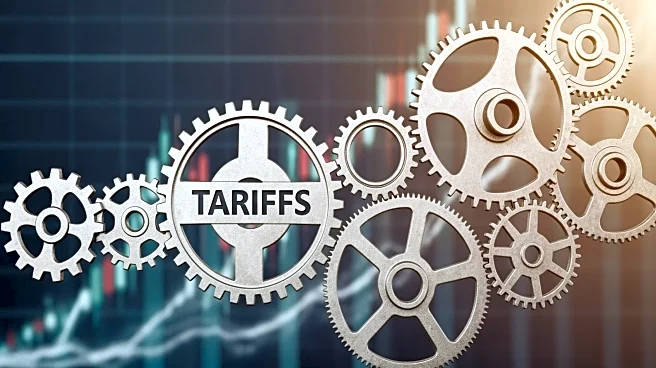What's Happening?
A recent S&P Global report has revealed that tariffs, along with other corporate costs, are expected to result in a $1.2 trillion loss for companies worldwide this year. The report, which analyzed data from 9,000 public companies, attributes this financial
strain to increased expenses such as wages, energy prices, and capital expenditures, particularly in AI infrastructure. The analysis indicates a sharp contraction in global corporate margin expectations, with a $907 billion loss in profits. This loss is primarily being passed on to consumers through higher prices, while a portion is absorbed internally by companies. The report also highlights that the economic impact of tariffs is unevenly distributed, with lower- and middle-income households bearing the brunt of the cost increases.
Why It's Important?
The findings of the S&P report underscore the significant economic impact of tariffs on both businesses and consumers. The $1.2 trillion loss represents a substantial financial burden that could lead to higher consumer prices and reduced purchasing power, particularly affecting lower-income households. This situation could exacerbate economic inequality, as wealthier individuals are better positioned to absorb these costs. The report also suggests that the tariffs could lead to a decline in real output, potentially affecting employment and economic growth. The uneven distribution of the economic fallout highlights the need for policymakers to consider the broader implications of trade policies on different segments of the population.
What's Next?
As companies continue to navigate the challenges posed by tariffs, there may be increased pressure on policymakers to reassess trade policies and consider measures to mitigate the impact on consumers and businesses. Companies might also explore strategies to diversify supply chains and reduce reliance on tariff-affected imports. The ongoing debate over the distribution of tariff costs could influence future trade negotiations and economic policies, potentially leading to adjustments aimed at reducing the burden on lower-income households.













